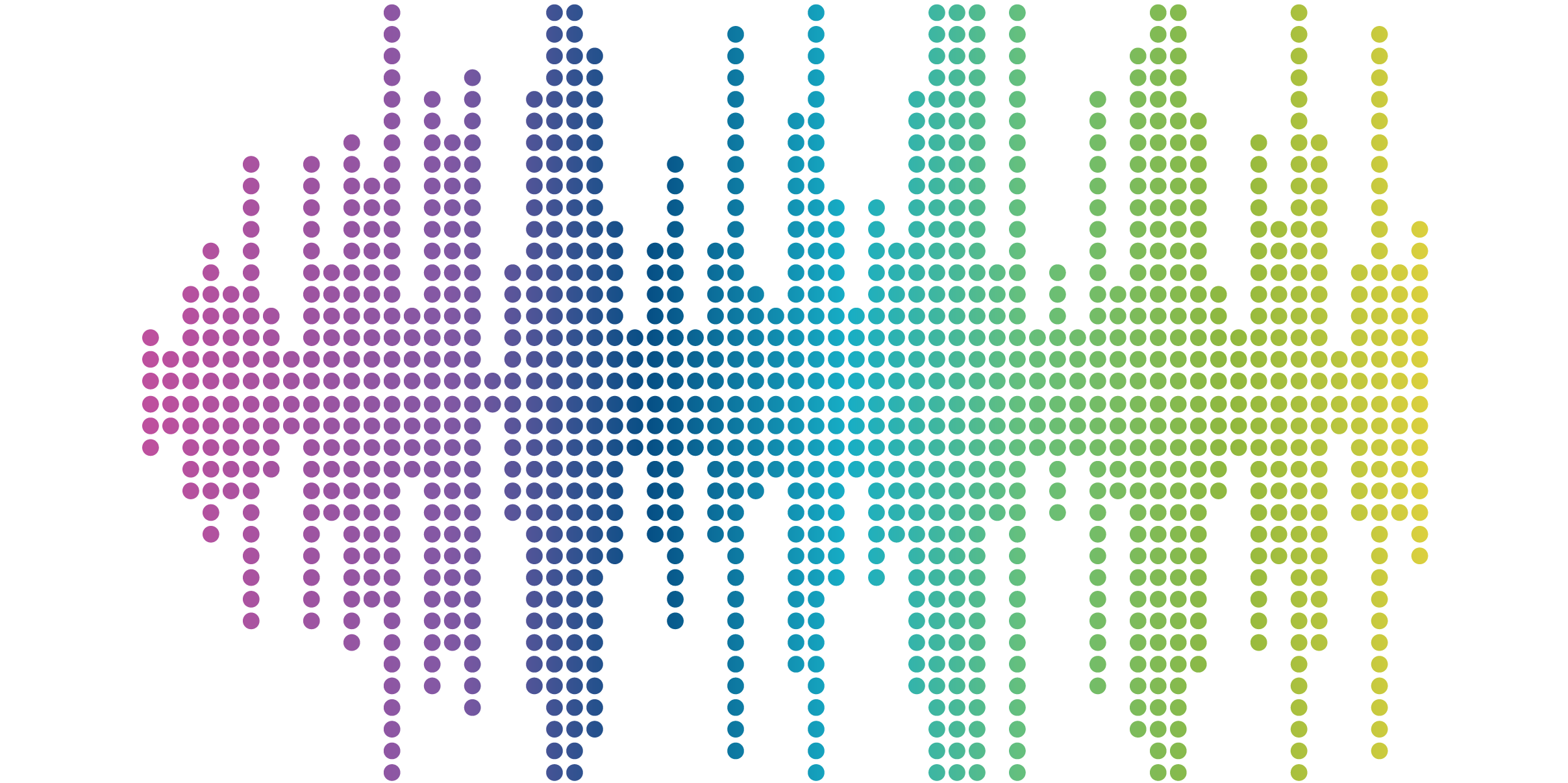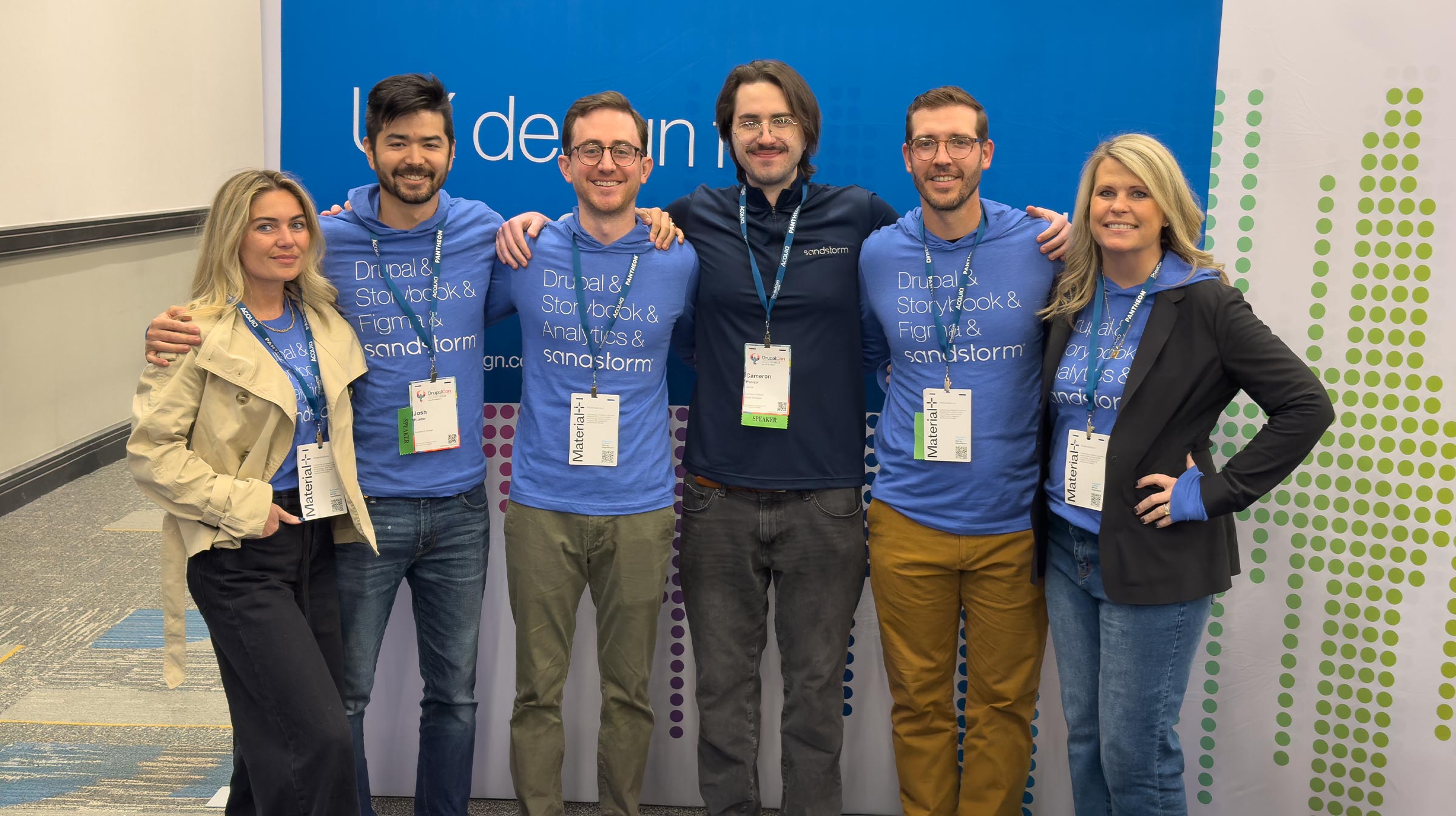
DrupalCon 2025 Highlights: Innovation, Tools & What It Means for Your Website

SUMMARY
Sandstorm recently attended DrupalCon 2025 in Atlanta, where we connected with the Drupal community, explored the latest innovations, and shared insights from our own work. Major announcements included the launch of Drupal CMS 1.0, exciting progress on the new Experience Builder, and a growing suite of AI-powered tools designed to improve site building, content management, and performance.
In this recap, we break down the most impactful updates from the conference, share our takeaways, and highlight how these changes can support your organization’s digital goals—whether you're launching a new site or optimizing an existing Drupal platform.
Table of Contents
- Highlights from the Driesnote
- Experience Builder
- AI-Powered Modules and Tools
- Sandstorm at DrupalCon 2025
- Let’s Talk Drupal
1. Highlights from the Driesnote
Dries Buytaert, Drupal’s founder, opened DrupalCon 2025 with exciting updates:
- Drupal CMS 1.0 Launch: Released on January 15, 2025, this milestone introduces a more accessible Drupal with a cleaner installation process and a user-friendly interface—ideal for newcomers and teams looking for faster onboarding.
- Experience Builder (Alpha): A major leap forward in content creation, this visual editor includes features like auto-saving drafts, multi-page editing, reusable components, and a drag-and-drop interface. A stable release is expected at DrupalCon Vienna alongside Drupal CMS 2.0.
- Site Templates: These pre-configured setups are designed for use cases like nonprofit and portfolio sites. By bundling modules, configurations, themes, and demo content, they simplify and speed up the site-building process—replacing the older distribution model.
- Drupal.org Marketplace: A potential new marketplace could allow free and paid templates to be shared, offering a fresh revenue model for creators and supporting Drupal’s sustainability through partnerships with the Drupal Association.
- AI Integration Experiments: AI-generated Experience Builder components are currently being explored. While still experimental, these tools offer a preview of how AI could streamline the site-building experience in the future.
💡 Sandstorm’s Take:
Dries’s keynote confirmed what we already believe—Drupal is accelerating toward greater usability and flexibility. For our clients, this means faster time to market, better tools for your teams, and future-forward infrastructure that’s built to last.
2. Experience Builder
Drupal’s new Experience Builder introduces promising updates aimed at improving the content editing experience and streamlining site-building workflows. Here’s what we learned:
- Live Editing Interface: The new Edit Page tool allows users to edit content with live previews. Editing forms are dynamically created based on Drupal’s configuration, following a Page Builder-style layout where components can be turned on or off depending on their role.
- Reusable Components: Configured content and components can be reused across multiple projects. Components built once can be exported and applied to future sites, increasing efficiency and consistency across digital properties.
- External Component Creation: A new tool is in development to allow for the creation of components outside of the browser, offering greater flexibility for developers and streamlining production workflows.
- Modern Tech Stack: React and Tailwind CSS are currently the frameworks powering component development. However, plans are in place to make the system framework-agnostic, enabling easier integration with other technologies and simplifying the component creation process.
- In-Progress Development: While Experience Builder shows great promise, it’s still a work in progress. Stability and security concerns were raised, including the lack of permissions or component lock-down functionality.
- AI Integration Limitations: AI tools for component generation were showcased, but they currently lack prompt control—raising concerns about maintaining design consistency and quality.
💡 Sandstorm’s Take:
This marks a meaningful improvement for marketing teams and site administrators. By reducing reliance on developers for layout updates, content teams will have more flexibility to manage and refine pages on their own—helping streamline workflows and support quicker content updates.
3. AI-Powered Modules and Tools
One of the most notable trends at DrupalCon 2025 was how deeply integrated AI has become across the Drupal ecosystem. Whether assisting with content creation, translation, or developer workflows, AI-powered modules are emerging as powerful accelerators for both editors and engineers.
Here are a few that stood out to us:
- AI Translate: This module helps convert website content from one language to another automatically. While human review is still needed to ensure accuracy and nuance, it provides a solid starting point—especially for global organizations looking to scale multilingual content faster.
- Image to SDC (Single Directory Component): This experimental tool allows developers to use an image or mockup to generate the structure of a component. It shortens the time between design and implementation and gives teams a head start on layout and code.
- Smartlinker AI: Designed to improve SEO and user experience, this module analyzes site content and intelligently suggests internal links. It helps editors keep linking consistent and relevant without combing through every page manually.
- AI Block Generator (Beta): By using natural language prompts, this tool creates layout-ready blocks that can be adjusted and deployed inside Experience Builder. It brings a whole new level of speed and flexibility to page assembly.
- Auto Meta AI: This tool suggests SEO-optimized meta titles and descriptions by scanning on-page content. It’s especially helpful for large teams or organizations that publish frequently and need to stay consistent with their SEO practices.
- AI Content Summarizer (Emerging): Still in early stages, this module can automatically create summaries of longform content—helping organizations produce digestible overviews for social sharing or page intros.
- Code Assist AI (Under review): For developers, this tool can suggest code snippets or help troubleshoot within Drupal admin, offering a lighter-weight alternative to more advanced AI dev tools.
💡 Sandstorm’s Take:
AI tools are bringing real efficiency gains to both content teams and developers. These enhancements can significantly cut down production time while still requiring expert oversight to ensure quality and alignment with your brand.
4. Sandstorm at DrupalCon 2025
We didn’t just attend—we presented! Two Sandstormers had the opportunity to contribute to the broader Drupal community by sharing our work and insights through speaker sessions:
- From Data to Insight: Crafting Custom GA4 Reports in Looker Studio for Website Success: Helping organizations turn analytics into action.
- From Figma to Function: Bridging Design and Development with Storybook & Drupal: Uniting designers and devs with component-driven workflows.
We’re not just users of Drupal—we help shape how it evolves! These sessions reflected what we’re passionate about: finding practical solutions, bridging strategy and execution, and helping others in the community navigate complex projects more efficiently.
Let’s Talk Drupal
Whether you’re exploring a new platform, looking to get more from your existing Drupal site, or curious about how tools like Experience Builder and AI integrations can streamline your workflow—Sandstorm is here to help.
Let’s talk about what’s possible with Drupal in 2025. Contact Sandstorm today.



